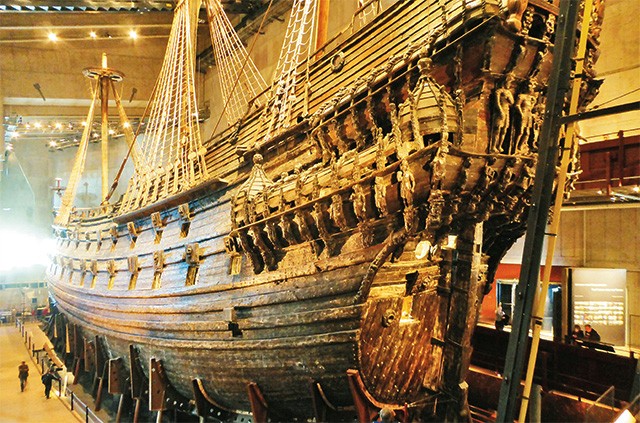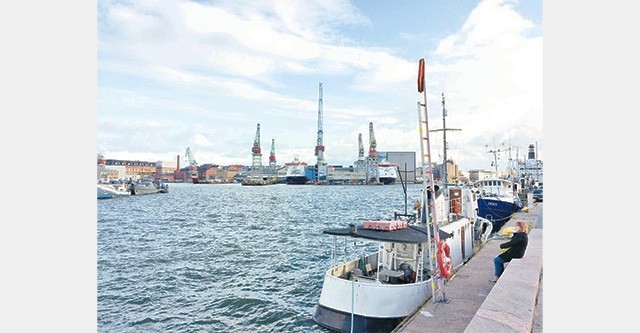Nordic Discovery, Viking
The Legendary Viking Land
When it comes to Vikings, people often think of pirates, either wearing a dangerous black bandage to cover one eye, or possessing a characteristic curvy, waxy mustache. But actually Viking is a proper noun used for quite a lot of subjects, from adventurers to warriors, from merchants to pirates… The only thing in common, they all have their origins in the Nordic country and All of them have extraordinary seafaring abilities.
From Viking legend
Appearing very early from the Late Stone Age, the most prosperous Viking age lasted from the 8th to the 11th centuries. Expedition and subsequent occupation have turned this people into a terror for many countries, on many continents. England and Ireland were ravaged and plundered by the Danish Vikings. The Norwegian Vikings crossed the sea to attack Scotland, the Faroe Islands, Iceland and Greenland. Eastern countries such as Russia, the Byzantine Empire also could not withstand the Swedish Vikings… Not only occupied, looted, the Vikings also participated in mercenary, slave acquisition, trade in many places. territories of Europe, Southwest Asia and the North Atlantic Ocean… With skilled warriors, possessing high-speed ships that can go very far with the ability to land very quickly without needing to do so. port,
The unparalleled courage and fighting spirit of Viking warriors stems from their unwavering belief in the destinations that await them after death. Norse mythology emphasizes, a true warrior sacrificed in the middle of the battle will reside in the paradise of Valhalla with the gods. And if you die of old age, die in a hospital bed, you will be banished to Hel – the cold dark underworld.
The art of shipbuilding has become the greatest pride of the Vikings. The drakar ships are large and long, have a fast speed and arrange many oars to help the ship to move even in no wind conditions. With a long and narrow hull design, a rather low upper part of the ship to support landings on land, the drakar is by default reserved for long voyages of exploration, fierce confrontations at sea. In addition, the Vikings also used a variety of knarr ships. With a short and wide body, very deep hull and no oars, the knarr has a lower speed but can carry more, so it is suitable for trade trips. Of the two types above, the name “Viking ship” is implicitly reserved for the drakar, the giant ships that brought back this warlike people so much land.
To the world of ancient ships
How lucky I was, I had the opportunity to participate in a roundabout cruise through a number of Nordic countries, to set foot in turn to the capitals of three countries Sweden – Norway – Denmark, where the cultural features The most unique culture of the Viking era is still preserved, preserved intact, like a thousand years ago. And cherished and cherished to the fullest, as national treasures.
By appointment, the Viking Ship Museum is present in all three countries mentioned above. And all of them are the most attractive tourist destinations in the journey to discover Northern Europe. Although every city has countless specialized museums, just looking at the icons on the tourist map is dizzying.
The Roskilde Viking Ship Museum in Denmark focuses on five ships that were recovered from Roskilde Bay in 1962. Five ships that set sail from a thousand years ago, have quietly sunk deep in the ocean, inert in the salty sea. It took too long before it was pulled up, preserved in a museum, as proud exhibits for posterity to admire. The combination of admiring the five long ships (named Skuldelev 1 to 5) and visiting Trelleborg – a best-preserved ancient fortress is an effective way to learn deeply about the Danish warriors – who were considered the most powerful invaders killing and pillaging in Viking history. Not only that, the land of lead soldiers also preserves a ravishing Ribe town, with the Viking Ribe museum keeping many important archaeological finds,
If you have the opportunity, visiting the Lindholm Hoje cemetery – a valuable archaeological site with nearly 700 ancient Viking tombs will help visitors get a panorama of this impressive period.
Visitors to Oslo (Norway) but skip the Viking Ship Museum will certainly regret it. Because in addition to three intact Viking ancient ships (discovered at three archaeological sites of Oseberg, Gokstad and Tune), many unique artifacts of the Viking culture found in the above sites have helped the architectural work. This beautiful place attracts hundreds of thousands of visitors every year. Curious to find out why wooden ships can endure the terrible destruction after millennia of being buried, I found out that the ship itself is the burial place of Viking leaders. Those nobles carried their possessions and belongings to the afterlife, in the very ship that once brought them glory, now wrapped in a thick layer of clay to prevent the wood from decaying.
It would be remiss not to list the most famous ship in Viking history named Vasa. It is showing off its majesty in the Vasa Ship Museum (Vasamuseet) in the middle of Stockholm (Sweden). A monumental building, just to display only one royal warship with the most splendid stature, the greatest in the world at the time of its birth, 1628. Vasa had a very strange fate, when the battleship The giant sunk on the spot, after a few minutes of launching before the horrified eyes of thousands of people present. Three years for the ship 60m long, 40m high with a capacity of 300 sailors and 64 cannons into shape. And before surfing on the waves, it sank for a silly reason: imbalance of gravity. Only 333 years later, in 1961, Vasa was salvaged to surface once again.
Located entirely on the Scandinavian peninsula, thanks to the soft winding terrain along the Baltic coast, the capitals of the Nordic countries mentioned above all have one thing in common: the blue sea is right in front of them. The harbors are close to boats, packed with dense masts. Large yachts and cruise ships crowded in and out. And a lot of wooden boats, shaped like Viking ships of the past, are gently anchoring, right near the port. They lie there, like whispering witnesses recounting old stories, when Viking warriors in helmets, swords, and shields embarked on voyages too perilous to write legendary Viking history.


